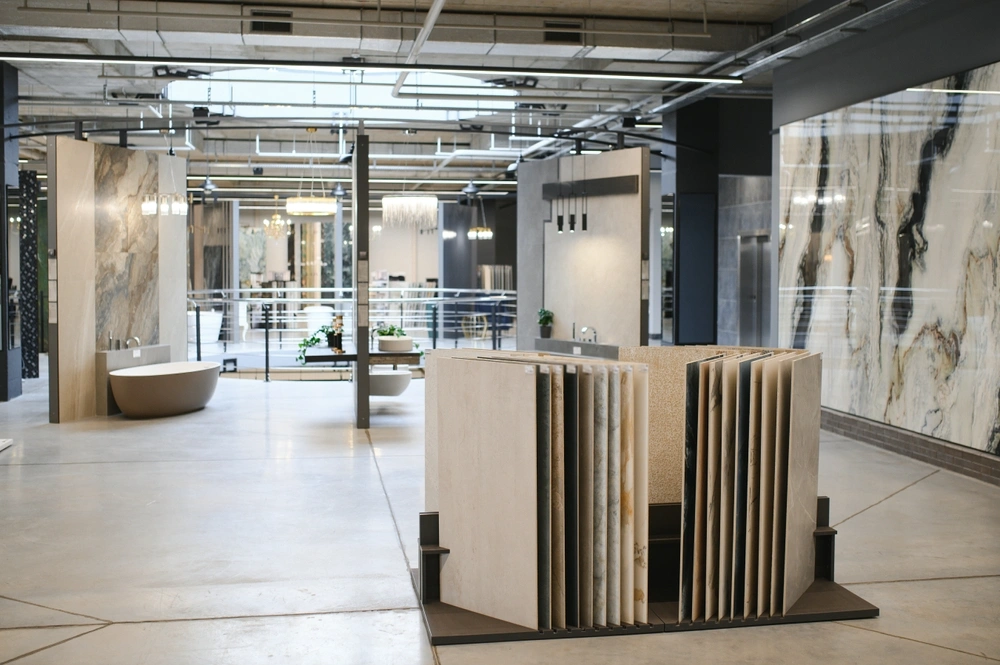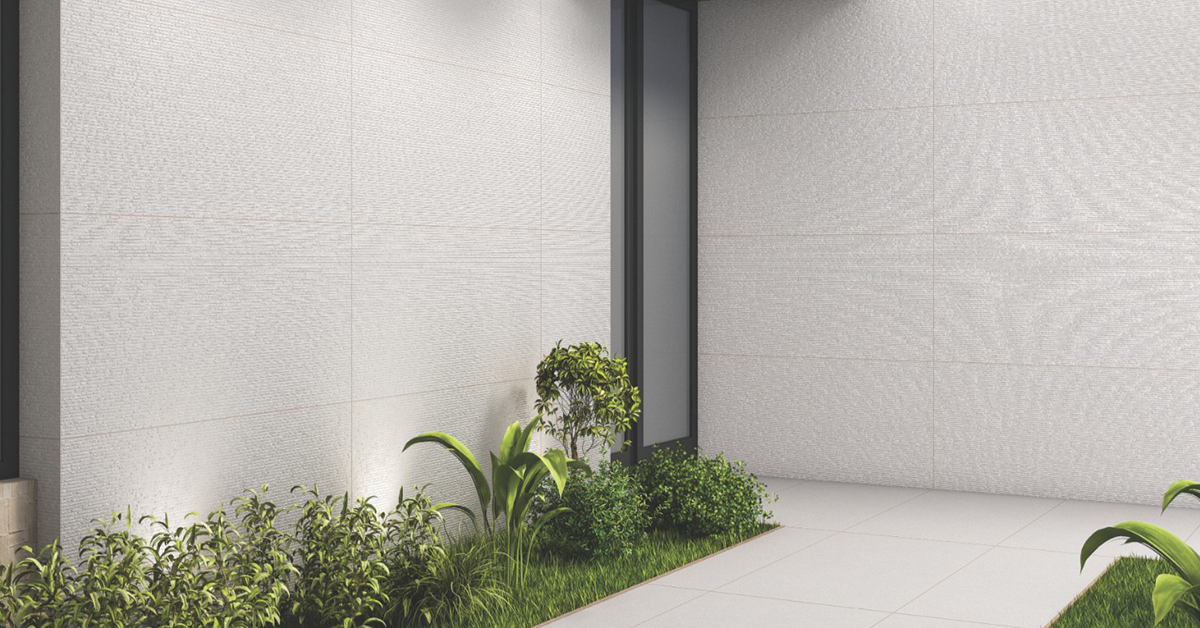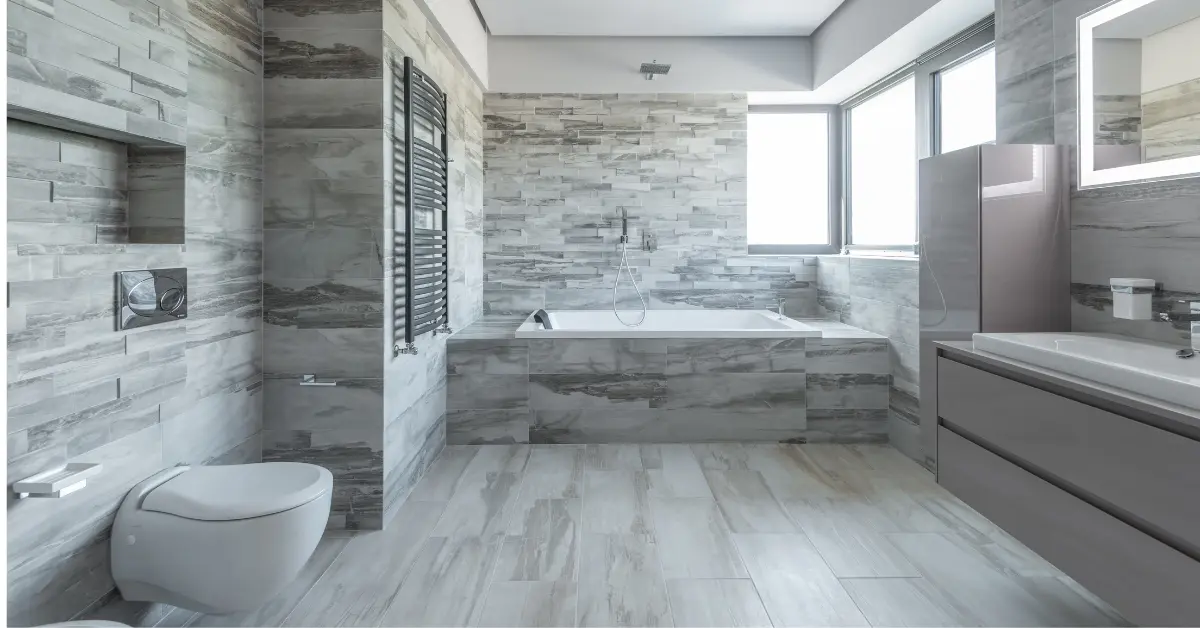
Differences Between Marble And Ceramics Tiles
The right type of flooring is the most crucial aspect when it comes to both the look and feel of your home as well as its usability. From an upgrade of your bathroom to choosing a floor to cover your living room, the kind of tile you use will determine the entire outlook of your space. Marble flooring and ceramic tiles are two of the many options available in the marketplace. Thus, each of them has unique features that capture their target audience and their requirements. In this blog post, let’s look at the major distinctions between them in terms of composition, appearance, hardness, price, setting, and sustainability.
Composition And Material
- Marble Tiles
Marble tiles are the product of natural stone or metamorphic rock mined from limestone, which undergoes heat and pressure changes. This forms the natural features in marble, such as the veining, and any colour variation that can be seen on each marble slab makes it a one-of-a-kind finish. So, its beauty is completely organic and can make any room, especially bathrooms, look luxurious. These qualities that can reflect light provide depth and warmth and, therefore, make it popular amongst interior designers and homeowners.
- Ceramic Tiles
Ceramic tiles is manufactured from clay or other natural materials that are moulded and then baked in a kiln. The glazing of the ceramic tiles produces the glaze and surface sheen on the tiles and acts more as a final coating that makes the tiles suitable for use. Ceramic is available in a wide variety of colours and textures and can be used in numerous designs, therefore, it can be used in different ways. They can also simulate the appearance of natural stones such as marble to make them another version of the costly products.
Aesthetic Appeal
- Marble’s Elegance
Marble has always been associated with elegance and richness. Through its natural patterns of veins and furnishing colours, it can easily set a striking centre piece in any room. Marble tiles are mostly associated with luxurious feel of recognizable expensive partitions of houses, for instance, sanitary installations and access to homes’ interiors. Marble possesses a classic appeal that can work with most architectural designs, therefore working for the majority of house owners.
- Versatile Designs In Ceramic
Ceramic tiles excel in versatility. With advances in technology, ceramic tiles now come in countless designs, including intricate patterns and vibrant colours. Homeowners can easily find ceramic tiles that mimic the look of marble, wood, or even fabric. This flexibility allows for creative expression in bathroom design, accommodating everything from minimalist aesthetics to bold, artistic statements.
Durability And Maintenance
- Marble’s Vulnerability
While marble tiles are stunning, they are not without their drawbacks. Marble is softer than many other natural stones, making it susceptible to scratches, chips, and stains. This vulnerability requires homeowners to be diligent about maintenance. Regular sealing is essential to protect marble from moisture and prevent damage in humid environments, such as bathrooms. Neglecting proper care can lead to costly repairs or replacements over time.
- Ceramic’s Resilience
Ceramic tiles are the best tile choice because of their flexibility. Thanks to technological development, ceramic tiles are available in numerous styles, which is why they can offer patterns and brilliant colours. Currently, ceramic tiles are made to resemble marble, wood, or fabric patterns. Such flexibility facilitates the needed variability in the creation of unique and original bathroom tiles designs from the concept of more strict, classic imagery to the conceptual Art statement.
Cost Comparison
- Pricing Of Marble
One of the most important factors is to compare marble and ceramic tiles before making a purchase. On average, Marble tiles fall on the high side because of the processes that go through in quarrying, further cutting into manageable sizes and polishing. Fluctuations exist due to the variations in quality, origin of source and unique designs, with the best brands being relatively expensive.
- Affordability Of Ceramic
Ceramic tiles are much more affordable than most other materials. As a result, they are able to offer a selection of products that are available to all economic classes without compromising on the quality or eye appeal of the pieces. This is an added advantage of ceramic tiles due to their relatively cheaper costs, especially for homeowners willing to make physical changes to their houses.
Installation Process
- Challenges With Marble
Marble is one of the most demanding materials, especially when installing it as a floor or wall tile. It is relatively heavy and usually requires accurate cuts, which makes it very sensitive to professional installation, which costs more. Also, preparing the subfloor for the marble tiles used is challenging because they are very heavy.
- Easier Ceramic Installation
Most ceramic tiles are easier to install and can ne done without the help of professionals. These are easier to lay than marble tiles and can easily be cut using standard tile-cutting tools. Ceramic tiles are significantly cheaper than other types of tiles, and homeowners can lay them themselves if they are handy with tiles.
Environmental Impact
Natural Vs. Synthetic
When considering environmental impact, it’s essential to examine the sourcing of materials. Marble is a natural product, but its extraction can contribute to environmental degradation and deforestation. The quarrying process often disrupts ecosystems and can leave lasting scars on the landscape.
Ceramic tiles, while made from natural materials, involve energy-intensive manufacturing processes. However, many ceramic tile manufacturers are now adopting more sustainable practices, including recycling water and using eco-friendly materials. Homeowners should look for certifications that indicate sustainability when choosing tiles.
Conclusion
Marble and ceramic tiles each offer distinct advantages and considerations. Marble is synonymous with luxury and elegance but requires more maintenance and comes with a higher price tag. Ceramic tiles provide versatility, durability, and affordability, making them an excellent choice for many homeowners, especially in high-moisture areas like bathrooms. Check out Spenza Ceramics to realise the full potential of ceramic tiles!
Ultimately, the decision between marble and ceramic tiles should be guided by personal preferences, budget constraints, and intended use. By carefully weighing the differences outlined in this blog, you can select the perfect tiles that enhance your home’s beauty while meeting your practical needs.

Explore our full range of Tiles
Find the perfect tiles for your area with our huge range of styles, colours, and finishes, No matter you are looking tiles for kitchen, bathroom, parking, exterior or interior spaces, we have it all.
Shop Now








